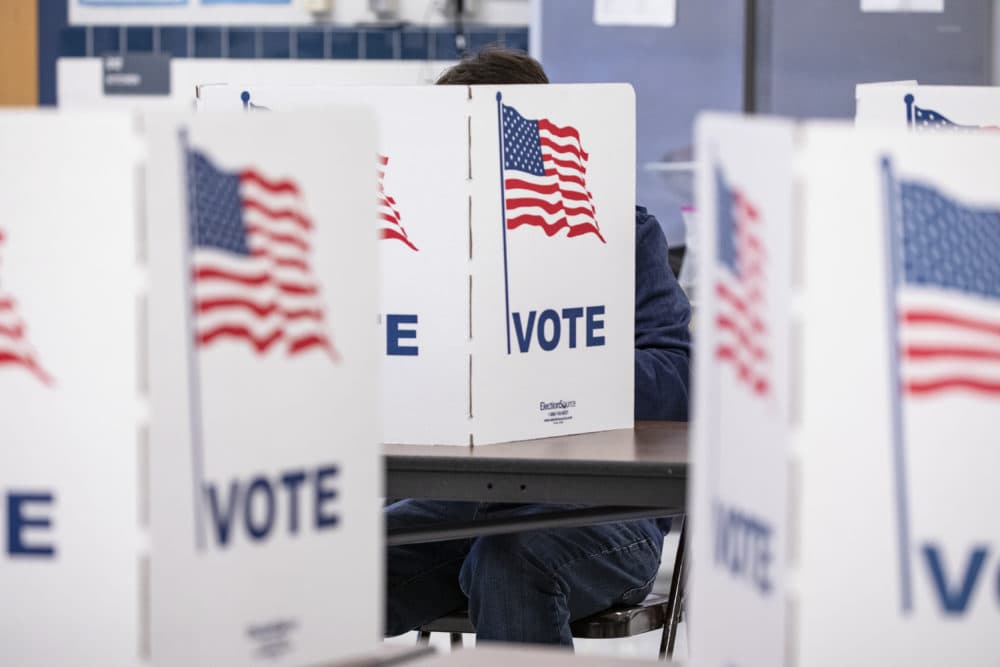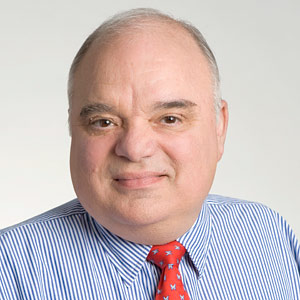Advertisement
Have Pollsters In 2020 Learned The Lessons Of 2016?

While most national and swing state polling shows former Vice President Joe Biden with a substantial lead over President Donald Trump in the 2020 race, the numbers are being eyed with some wariness by voters.
That's due in part to the fact that polling in the 2016 presidential race missed the reality on the ground in key swing states, which led to spurious predictions of a strong win for then-Democratic candidate Hillary Clinton. Those key states went on to go for Trump, of course, resulting in one of the biggest perceived political upsets in modern history.
So how seriously should we take horse race polling in 2020?
To find out what's changed in polling since 2016, WBUR's Morning Edition host Bob Oakes spoke with Steve Koczela, president of the MassINC Polling Group.
Interview Highlights
On how polling got the story wrong in 2016
Koczela: It was a combination of things, really. Polls were showing Hillary Clinton in the lead in key states. Then those polls were taken by aggregators and forecasters and so forth, and basically used to make a probability that Hillary Clinton would be the president.
Now, unfortunately, there was not very much polling in some swing states, polls that weren't very good in some swing states and then polls that didn't account for the education level of voters and basically had too many college-educated voters in their samples. What that does — because education is such an indicator of partisanship — is that if you don't account for that, you end up with a sample that is too Democratic. That hasn't always been the case. Education — college education — hasn't always been as partisan of a thing as it is now.
There were some other things going on too: The election was still moving at the last minute. Polls that were done — you know, seven to 10 days out — missed undecided voters breaking for Donald Trump at the last minute. One of the reasons that 2016 turned out the way that it did was that voters who didn't like either Trump or Clinton broke very heavily for Trump and they broke very late for Trump.
Advertisement
On what's changed in polling since 2016
Koczela: [In 2016,] national media outlets were focused on national polling — which, of course, as we all know — is not how we pick the president. So one thing you're seeing [in 2020] is a lot more state polling from groups like The New York Times and the Siena Poll ... The Washington Post. ... We never know if there's going to be some new wrinkle that's come up that we didn't anticipate, like education was in 2016, but at least we can say that the things that happened in 2016 — pollsters and the broader polling community have addressed those things.
What pollsters will be watching for in 2020
Koczela: If there's one thing in 2020 that I think does pose a special challenge for pollsters, it's all the changes to the rules and not knowing exactly what that's going to do to who actually turns out. Will there be a swell of young people? Will there be a swell of Democrats early and Republicans late and does that somehow change the balance of party turnout? Does it change, you know, where voters turn out if it's more difficult to turn in ballots in some places than in others?
On the limits of polling
Koczela: I think polling sometimes has a level of precision that people want from it, that it just is not designed to provide. You know, it can describe the race — it can show where the race is within a relatively wide level of precision. But it can't predict the future. It can't predict that [James] Comey is going to, you know, write a letter and change everything with a week to go, and that undecided voters are going to swing for Trump at the last minute. It can't do those things. So I think it's also just important for pollsters to be clear about what it is that we can do and what it is that polls really aren't designed to be able to do.
... People that don't do numbers in polling everyday, you know, they read Trump has a 30% chance of winning as Clinton is way ahead. Instead of: '30%, that's a lot!' You know, imagine a 300 major league hitter. That's a really good hitter. You wouldn't think, 'Well, that guy's never gonna get a hit because 70% of the time he doesn't.' That was basically the situation in 2016. That's what Five Thirty Eight was saying: that Clinton is probably going to win, but there's still a really good chance Trump's going to win.
This segment aired on October 16, 2020.

